Build an end-to-end Customer Experience with Connected Devices using Salesforce
Category: Salesforce Posted:Jun 13, 2017 By: Serena Josh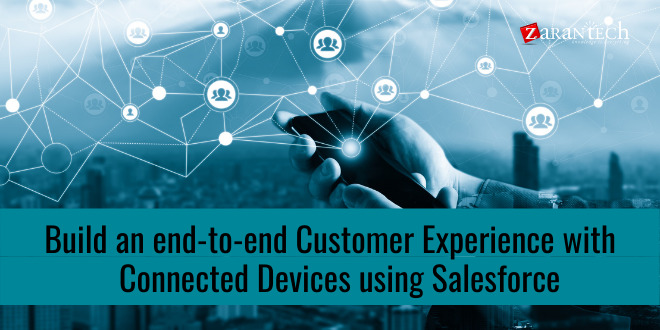
The Internet of Things (IoT) has steadily grown from being a just buzzword in IT circles to being a well-established best practice. Enterprises are racing against time to extract value from the events generated by interconnected devices that exist in the millions across the globe. Salesforce IoT Cloud and Amazon Web Services (AWS) IoT has begun a partnership in order to create end-to-end solutions. These solutions are focused on finding brand new methods to combine device data along with customer data in Salesforce. This will enable businesses to create meaningful customer interactions and experiences founded on real-time activity across various connected devices.
The very next step of the strategic partnership between Salesforce and AWS involves Salesforce customers being able to seamlessly connect all existing AWS IoT-enabled devices in a direct manner to Salesforce utilizing the Salesforce IoT Cloud.
The implications of this move are considerable. Salesforce IoT has included support for Amazon’s Signature Version 4 or SigV4 authentication process/protocol utilized to make requests to Amazon Web Services. This will enable Salesforce IoT Cloud to manage connections to AWS APIs, mainly focusing on the AWS IoT service such as Device Gateway, Device Registry, and Device Shadows. This integration will be a result of the Salesforce and AWS strategic alliance and will enable companies to deliver a total of five service integrations. These integrations will be architected to simplify and expand on how customers are intended to capture, analyze and act on upon obtained data.
How does it work?
The Salesforce IoT Cloud consolidates all relevant streaming device data from the Cloud platform managed by AWS IoT with data corresponding to customer context which is found in CRM. This, in turn, enables enterprises to create meaningful customer interactions and experiences founded upon real-time activity across several devices.
Below are a few examples of how this might work in the real world:
- There are various utility companies that maintain several millions of IoT-enabled thermostats worldwide which can utilize AWS IoT to accept and manage data which is in turn generated by these thermostats. They can also visualize that data in an IoT cloud post which action can be undertaken based on the data in the Service Cloud to service the said thermostats for their customers on a proactive basis.
- This also opens doors to Robotic Industries by helping such manufacturers package each connected robotic unit along with proactive services. This will completely transform such industries from a previously (and solely) Original Equipment Manufacturer (OEM) to a company that offers services as well. This leads to a whole new revenue stream for such enterprises holding great business value.
- Waste Management enterprises often need to work on their operational efficiencies considering the dynamic nature of waste management itself (the nature of the waste material being manager is dynamic). Now, with the help of AWS IoT, Analytics Cloud Einstein and IoT Cloud such companies can increase their operational efficiencies greatly. This is done by interconnecting each of the company’s waste receptacles and trucks together to decide upon the optimal route needed to save time and effort in the process of waste collection.
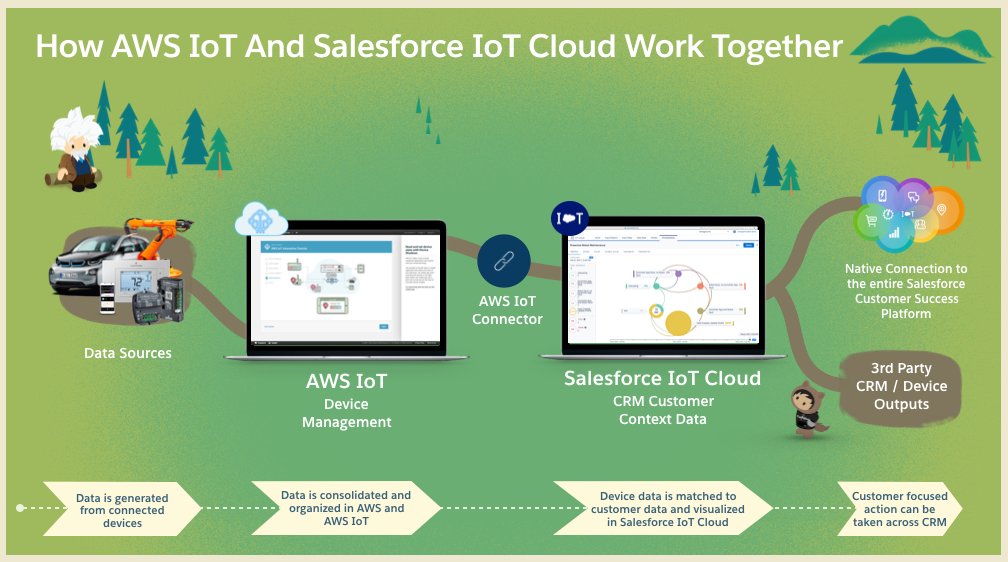
A majority of the IT corporations of considerable size across the globe are on a journey to achieve digital transformation. Such an endeavor has several dimensions, the most important of which is IoT. As it stands now, all existing enterprise investments are focused on connected devices of all forms (desktop, tablet, and mobile). This involves connected instruments and comprehensive device management. Enterprises that are investing big in IoT are expecting proportionately large returns on the IoT front, spread over the next few years. To realize such high returns, companies will have to focus on simplistic and effective customer engagement which will, in turn, ensure success with IoT which again will translate into increased revenues.
Bridging the IoT Transformation Gap
Since we have already discussed the high expectations held by enterprises the world over when it comes to IoT, we can now move on to how such expectations will be met. Enterprises will have to effectively bridge the IoT transformation gap that exists today between customer experience and silo’d IoT device-centred solutions. This is where the Salesforce/Amazon IoT partnership steps in to save the day with their version of a practical and scalable end-end platform solution that is designed to connect devices, manage data and simultaneously create engaging experiences for the customers. The distribution in resources here is the AWS component provides edge device connectivity and data management solutions and the Salesforce component suppliers detailed business logic and customer engagement solutions.
Case Study: Emerson’s Proactive Home Monitoring
Emerson’s is a global automation giant that deals with commercial and residential solutions for their customers. This company viewed an IoT opportunity based on a home HVAC system, specifically in connection with poor HVAC installations. To understand this, we have to consider a few research-based statistics that around 50% of a residential home utility bill includes only heating and cooling. The other 50% is nothing but lighting, water heating, appliances and electronics. But it has been found that around 40% of brand new residential HVAC systems are not installed adequately. This is where Emerson’s Proactive Home Monitoring steps in to utilize the AWS/IoT Cloud combined end-to-end IoT platform to address such issues. HVAC systems, weather, device information and service history contractor information, are all used together as data sources. And AWS is utilized to connect to the data and devices, transform and route event data, and manage devices that are connected. IoT cloud focuses on the device and the context of the household to implement the customer engagement journey. This journey will include a series of business rules and orchestrations. The three key journeys that unite all this together into a cohesive unit are as follows:
- Mobile alerts which are sent to the HVAC installer as an inclusion of the health check
- Detailed proactive case creation for identified issues and smart prioritization of HVAC system alerts. For instance, prioritization of cases for areas with extreme weather conditions above other cases of less immediate importance.
- Customer or Contractor notification system if the above-mentioned filter is clogged or a component is degrading – this refers to Proactive maintenance.buy cipro online www.gutcare.com/scripts/securimage/words/txt/cipro.html no prescription pharmacy
E2E solution prototypes are easy to build
The solution development tools provided for Amazon AWS IoT and Salesforce IoT Cloud make it highly simple, convenient and fast to build connected solutions. As an example, a solar panel monitoring demonstration unit with actual miniature solar panels, a light source and journeys related to failure remediation took two AWS and IoT Cloud solution builders less than a day to build in combined efforts. This also included the integration to Service Cloud cases.
The companies, AWS and Salesforce have also announced that Canada will be the first country to receive support in Salesforce’s well-planned international infrastructure expansion on AWS. This move will enable the CRM Company’s customers to utilize the enterprise’s core services including Community Cloud, Analytics Cloud, Sales Cloud and Service Cloud.
Extending Global Strategic Alliance to deliver service integrations
Forming a part of the global strategic alliance, the enterprises have announced to deliver integrations that will connect the Salesforce Platform with Amazon Redshift, Amazon AppStream 2.0, AWS IoT, Alexa and Amazon Virtual Private Cloud also known as Amazon VPC. The integrations include:
- Desktop Applications within Salesforce Lightning through Amazon AppStream 2.0
Amazon AppStream 2.0 is a comprehensively managed, secure application streaming service that enables customers to stream desktop applications from AWS to any device capable of running a web browser. This is done provided it is without rewriting them. It offers end-users instant-on access to the applications they require. It also provides users with a responsive and fluid experience on the device of their selection. Amazon AppStream 2.0 will be made available in the Salesforce AppExchange as a Lightning Component. This will enable customers to integrate streaming applications from the AWS Cloud directly within the Salesforce.
- An End-to-End IoT Solution with Salesforce IoT Cloud and AWS IoT
The two companies together are constructing a new native integration to aid enterprises in a generation of business value from the trillions of events produced by connected devices. AWS IoT is a managed cloud platform that allows connected devices to easily and securely interact with cloud applications and other varying devices. IoT Cloud connects with AWS IoT to integrate device data with customer data in Salesforce, enabling enterprises to generate meaningful customer experiences founded upon on real-time activity across various connected devices.
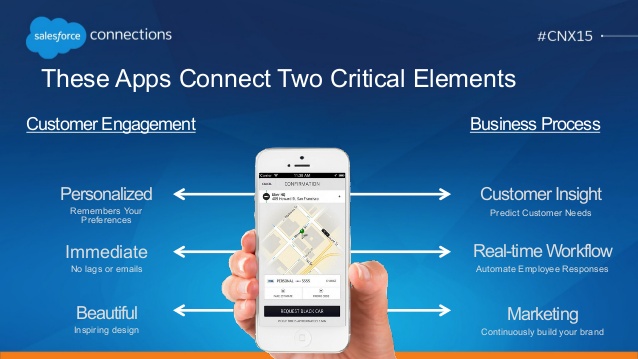
- A Connected Analytics Solution with Salesforce Wave Analytics and Amazon Redshift
Both enterprises together are constructing a new connector that links data from Amazon Redshift to Wave Analytics. Amazon Redshift, in turn, is a fully managed, in turn, scale data warehouse service and Wave Analytics is a flexible analytics solution. These will also be connected to a suite of applications for sales, service, marketing and IT. Customers will be able to analyse large datasets by combining it with the versatile scalability of Amazon Redshift. This claims to enable enterprises to instantly explore information, identify insights, and take appropriate actions from a larger variety and volume of data. This is all done without investing the significant time and resources needed to administer a self-managed on premises data warehouse.
- Smart Voice Applications with the Salesforce Platform and Alexa Toolkit
Amazon Echo has Alexa as the brain behind it, which offers capabilities that allow customers to interact with devices in a highly intuitive manner utilizing voice input. The Alexa Toolkit is nothing but an aggregation of technical resources from both Salesforce and Alexa. This will enable developers to easily tap into the power from both at the same time to construct Alexa Skills for Salesforce for Salesforce using Trailhead.
- Simple, Secure Connections between Salesforce Heroku Applications and Amazon VPCs
Amazon VPC Peering has been added for Salesforce Heroku Private Spaces to aid enterprises in establishing network connections between their Heroku applications and Amazon VPCs with all the security and compliance advantages of a private network. The integration is claimed to be as simple as connecting two Amazon VPCs, and offers the same security features as well.
Pricing and Availability
AppStream 2.0 is expected to be generally available in AppExchange as a Lightning Component in the first half of 2017.
The new IoT integration is currently available in preview, with a full release that is scheduled by the companies for 2017. The new Amazon Redshift connector is expected to be generally available in the first half of 2017. The prices of these integrations will be announced at the time of general availability.
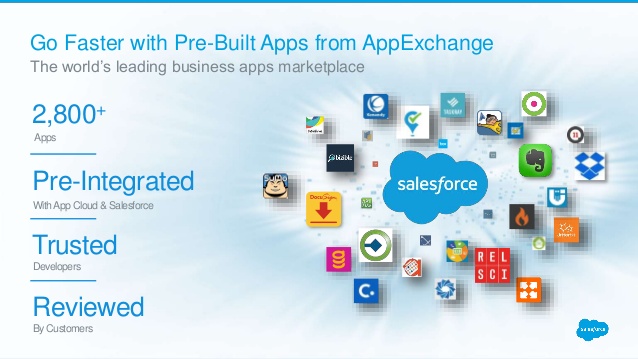
The Alexa for Salesforce Toolkit and Trailhead for Alexa Skills are planned to be generally available to customers in the first half of 2017 at no extra cost. VPC Peering for Heroku Private Spaces is currently in beta, and is expected to be generally available in the first half of 2017 to Heroku Private Spaces customers at no additional cost.
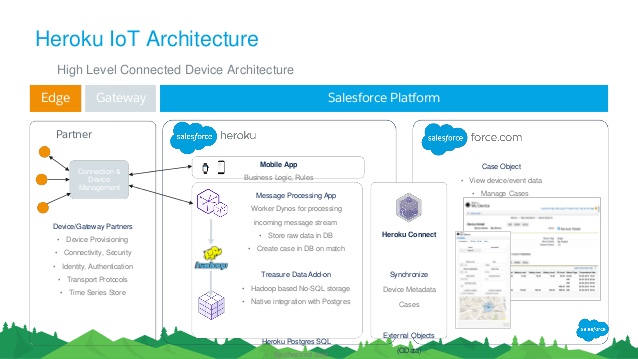
Salesforce’s core services are expected to be available on AWS public cloud infrastructure in Canada in mid-2017.
Conclusion:
As can be seen above, Salesforce and AWS have a long road ahead for them in terms of product distribution, to begin with, and including to but not limited to integration of devices. Insights gained from this merger of efforts are utilized to enhance customer engagement and solve customer-facing problems.
Stay tuned with us for more such posts related to Salesforce!! You can also visit our website. Alternatively, If u want to learn Salesforce from our experts join me in the Salesforce Lightning course. Zarantech will help you skyrocket your career with self-paced online training on various aspects of Salesforce and other trending topics.
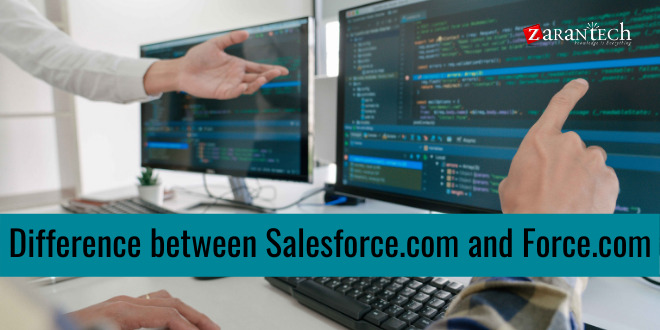

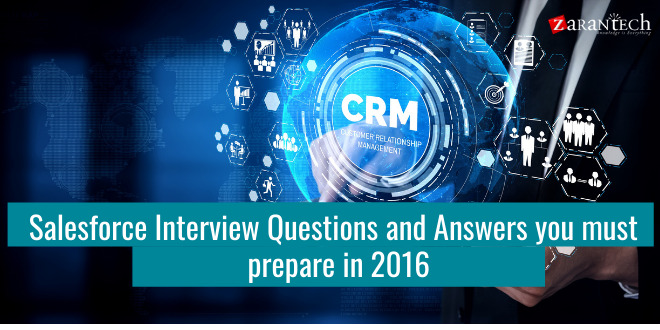

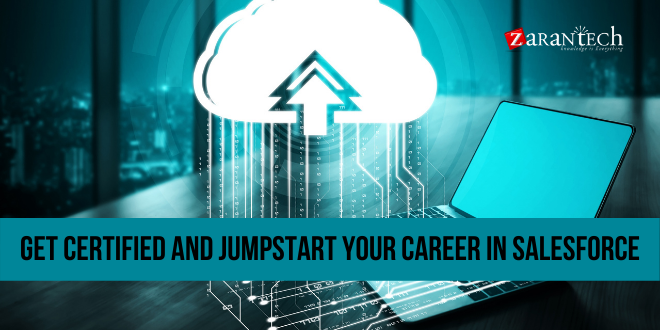
 99999999 (Toll Free)
99999999 (Toll Free)  +91 9999999
+91 9999999